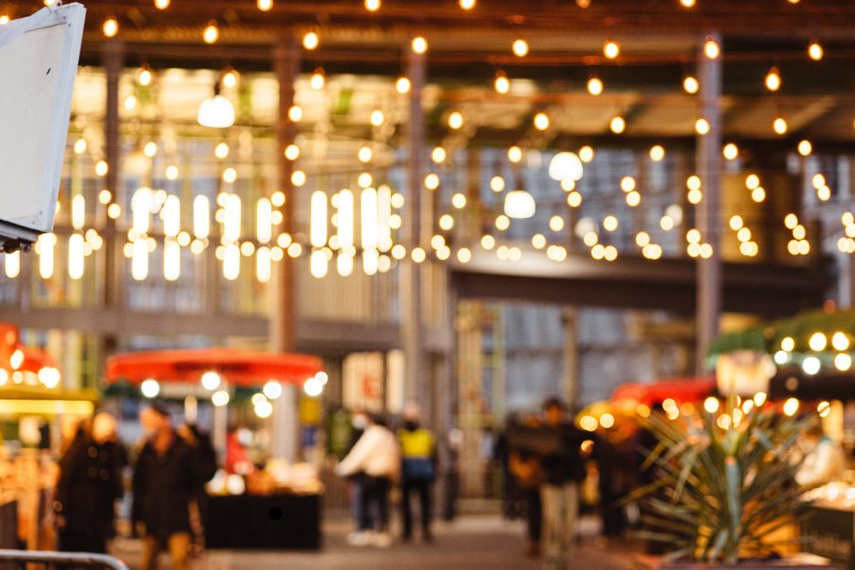
The festive quarter in India has long been the country’s biggest consumption story. But as 2025 begins, marketers face a consumer landscape that is neither homogenous nor predictable. While sentiment remains buoyant, shoppers are demonstrating sharper preferences—about what they buy, where they buy it, and how they want to be engaged.
VDO.AI, a global advertising technology company, has attempted to map this terrain in its Festive Marketing Playbook 2025, a study based on a survey of 1,400 consumers across Tier-1 and Tier-2 cities. The findings point to a market that is split between aspirational spending in metros and value-driven purchases in smaller towns, while also underscoring the growing dominance of short-form video and connected TV (CTV) in capturing consumer attention.
A marketplace of shifting attention
The most prominent headline from the report is that 81% of consumers say short video ads capture their attention most effectively during the festive season. That shift has direct implications for brand strategies. Traditional mass campaigns may no longer suffice; instead, snackable, immersive formats appear poised to dominate.
“For brands, this reaffirms that the battle for consumer mindshare will be won on formats that are not only visual and snackable but also immersive and measurable,” the report notes. CTV, in particular, has emerged as a premium advertising space, with interactive and shoppable ad formats merging entertainment with commerce.
“Festive marketing today is no longer about uniform, mass campaigns. What we are witnessing is a marketplace split between aspiration and thrift, metros leading premiumisation, while smaller towns focus on value,” said Amitt Sharma, co-founder and CEO of VDO.AI. “For brands, this festive season represents more than a sales uplift; it is a defining opportunity to reimagine consumer engagement and set the tone for long-term growth.”
Spending diverges between metros and smaller cities
While the festive season remains synonymous with rising consumption, the report highlights that growth will not be uniform across markets.
Around 41% of consumers surveyed said they plan to spend more this year than in 2024. Yet their budgets vary. For 32% of shoppers, the sweet spot lies between INR 15,000 and INR 30,000, suggesting a balance between aspiration and affordability. Meanwhile, 28% of Tier-1 consumers anticipate spending above INR 30,000, and 13% expect to cross INR 50,000.

By contrast, nearly two-thirds of Tier-2 and Tier-3 shoppers plan to keep their budgets at INR 15,000 or less. This creates a split market, where brands must calibrate their messaging carefully—premium-led narratives for metro audiences, value-led propositions for smaller-town consumers.
Premiumisation meets pragmatism
The divide is shaping creative strategy. The Playbook suggests that with 70% of consumers open to premium buys, aspirational campaigns can find traction if backed by strong messaging. At the same time, data-driven segmentation will be necessary to reach those prioritising thrift.
The geographic and economic split also repositions metros as epicentres of premiumisation. High-value targeting is expected to be concentrated in Tier-1 cities, while the challenge in smaller markets will be to connect on the basis of practicality, affordability and emotional resonance.
The study extends its focus beyond purchase behaviour, noting that the festive season is also a moment for brands to cultivate loyalty. Over 60% of respondents said they would be willing to buy again within six months if their festive experience is positive.
That statistic reframes festive marketing as a long-tail exercise. Campaigns built purely around short-term sales may no longer be sufficient; the bigger opportunity lies in ensuring customer experiences that translate into repeat business.
“Consumers are no longer just buying products but choosing experiences that reflect their values and traditions,” the report observed.
Tradition through a new lens
The Playbook argues that festivals continue to serve as emotional inflection points, stirring nostalgia and generosity. But consumer decision-making is no longer driven purely by sentiment.

In 2025, the report describes a shopper who is optimistic yet intentional, making purchase choices that serve both emotional fulfilment and practical accountability. Sustainability and quality are gaining ground as key considerations, even during festive periods traditionally associated with excess.
VDO.AI interprets this shift as a reimagining of tradition. “While they are chasing delight, consumers also want durability; they are emotional, but also accountability. Sustainability is no longer just a buzzword, and quality is being chosen over excess,” the report said.
The survey behind the Playbook captured inputs from a cross-section of consumers: Gen Z (18–24), young professionals (25–34), mid-career adults (35–44) and older consumers (45+). Income levels ranged from under INR 5 lakh to above INR 30 lakh annually.
This breadth provides insights into how different cohorts approach the festive season. While younger consumers may prioritise entertainment-led formats such as short videos and shoppable ads, older demographics bring more deliberate, value-led thinking to their purchases. The segmentation underscores that one-size-fits-all festive campaigns risk missing the mark.
Platforms in focus
The Playbook also identifies the digital channels that will dominate festive campaigns in 2025. Short video emerges as the undisputed attention driver, while CTV is positioned as a new ‘living-room billboard’ for brands seeking premium audiences. Interactive and shoppable ad formats, which allow consumers to move seamlessly from viewing to purchasing, are likely to see significant uptake.

“Our Festive Marketing Playbook 2025 makes it clear that consumer attention is shifting towards formats that inspire action, short video, and CTV being at the forefront,” said Mehak Chawla, director of marketing and growth at VDO.AI. “For brands, this represents an opportunity to move beyond awareness and drive measurable business impact.”
The report highlights the importance of personalisation in festive campaigns. Consumers increasingly expect hyper-personalised experiences, where every interaction feels tailored. VDO.AI argues that AI-driven intelligence will play a crucial role in delivering this level of precision.
According to the Playbook, the coming festive season will reward brands that use data to build intuitive experiences, turning consumer insight into sharper creative, media and campaign decisions. Attention itself is described as the ‘new currency’, with data-driven AdTech acting as the bridge between aspiration and action.
From transactions to loyalty
For agencies and marketers, the insights point to both opportunities and challenges. The fragmentation of consumer intent—between metros and smaller towns, between premium and value segments, across different generations—requires campaigns that are layered, data-rich and responsive.
The shift towards short video and CTV also raises questions about investment priorities. As budgets migrate towards newer formats, traditional media will have to fight harder for relevance. At the same time, the demand for interactive and shoppable content may force agencies to reconfigure their creative processes, with storytelling and commerce becoming increasingly intertwined.
Although positioned as a festive playbook, the findings have implications beyond the October–December window. VDO.AI suggests that the trends observed during festivals often set the tone for marketing strategies in the following year.
Its report frames 2025 as a year when consumer behaviour will test the industry’s agility. The market remains large, but growth depends on how effectively brands balance aspiration with pragmatism, and how well they can convert festive attention into year-round loyalty.
The festive season in India continues to be the largest single driver of consumption, but the nature of that consumption is evolving. Shoppers are no longer passive recipients of mass campaigns; they are selective, intentional and quick to reward brands that deliver relevance and value.
For marketers, the message is clear. The question is not whether to be present across digital channels, but how many, and how well. Short videos, CTV and AI-powered personalisation may dominate the headlines, but the real challenge lies in translating these into experiences that outlast the festival calendar.
As Amitt Sharma of VDO.AI noted, the festive quarter now represents more than a sales opportunity. It is, in effect, a proving ground for long-term strategies.


.jpg&h=334&w=500&q=100&v=20250320&c=1)
.jpg&h=334&w=500&q=100&v=20250320&c=1)
.jpg&h=334&w=500&q=100&v=20250320&c=1)
.jpg&h=334&w=500&q=100&v=20250320&c=1)
.jpg&h=334&w=500&q=100&v=20250320&c=1)
.jpg&h=334&w=500&q=100&v=20250320&c=1)
.jpg&h=334&w=500&q=100&v=20250320&c=1)
.jpg&h=334&w=500&q=100&v=20250320&c=1)
.jpg&h=334&w=500&q=100&v=20250320&c=1)
+(1).png&h=334&w=500&q=100&v=20250320&c=1)

.jpg&h=268&w=401&q=100&v=20250320&c=1)

.jpg&h=268&w=401&q=100&v=20250320&c=1)

.jpg&h=268&w=401&q=100&v=20250320&c=1)
.jpg&h=268&w=401&q=100&v=20250320&c=1)
.jpg&h=268&w=401&q=100&v=20250320&c=1)
